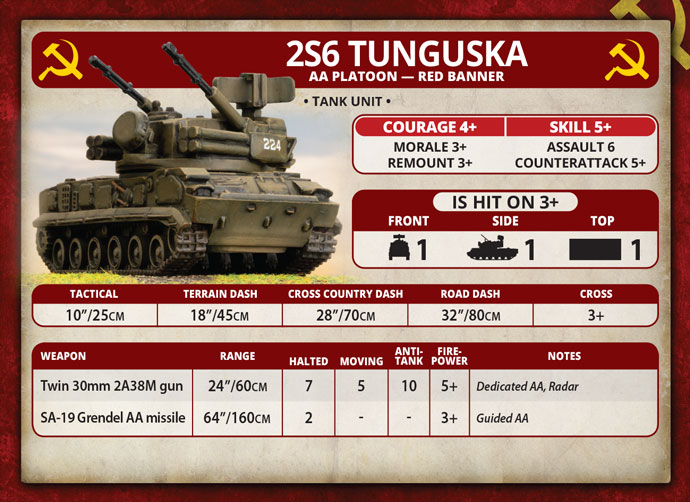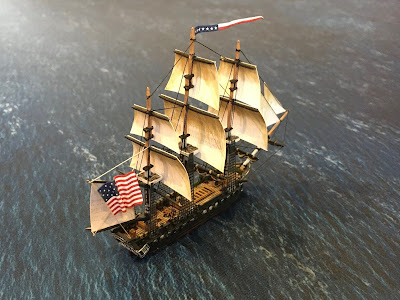I updated my AA spreadsheet to include the Tunguska stats, and reran the cost-effectiveness calculation: which unit will do the most damage to a flight of typical NATO jets per point expended (click on the chart to get a higher resolution version). The Tunguska's guns come in as the third most cost-effective form of air defence, but suffer from occupying the same unit slot as the Shilka. If you are looking for long range air defence, the Tunguska's missiles on the other hand are terrible value for money - costing as much as a Gecko while losing a point of ROF.
This ability to fire both weapons at helicopters in sequential turns raises the question of which weapon should you fire in the enemy turn, and which in your own. The specific scenario I have looked at here is a pair of Tunguskas shooting at a pair of hunter killer helicopters (making the heroic assumption they are in range of both weapons), and compared it to an equivalent cost unit of Shilkas. In the turn which the helicopters fire, you shoot against a Concealed and Gone to Ground target, while in your turn they are only Concealed. Assuming the helicopters are in range of both weapons, is it better to fire the guns needing 6s and the missiles needing 5s, or vice versa? Overall it's better to fire the missiles at the Gone to Ground target, because the guns are just so much better at killing stuff that it's best for them to be hitting on 5s rather than 6s. So the question then becomes: can you afford to lose the teams that the helicopters are targeting? If yes, fire missiles then guns in order to have a higher chance of killing something across the two turns. If not, either fire the guns first to try and kill them before they get you, or better yet just spend the points on Shilkas. The final question I wanted to answer was how many points should I be spending on AA in my Soviet lists? Or more specifically, how much air defence do you need to be able to defend against four A10s?
- If Geckos get shot at, they die. Keep them concealed as best as you can.
- It's no surprise that the best protection comes from spending the maximum possible points across your three AA slots for quartets of Tunguskas, Gophers, and Geckos.
- For a given number of points to be spent on AA, it is more effective to spend those points on more platoons of cheaper weapons, rather than fewer platoons of better weapons. For example, four Shilkas and four Gophers are a more effective use of 8pts than four Tunguskas.
- My pick from the choices available for the best AA combination available to the Soviets would be a platoon each of Shilkas, Gophers, and Geckos.
- If you are simply looking at their AA performance, the Tunguska is too expensive, and the marginal increase in protection it offers is simply not worth the additional four points over a unit of Shilkas.
- Maybe they could have a role as an ambush unit? It would be kind of interesting to see what 28 dice at AT10/FP5+ would do to a LAV company. Apart from that, with Armour 1 they are not something that you should be relying on to kill ground targets unless you're desperate.
- I would only use the Tunguska for fluff reasons or because the model is cool. Which of course means that I need to get some Tunguskas.






















































